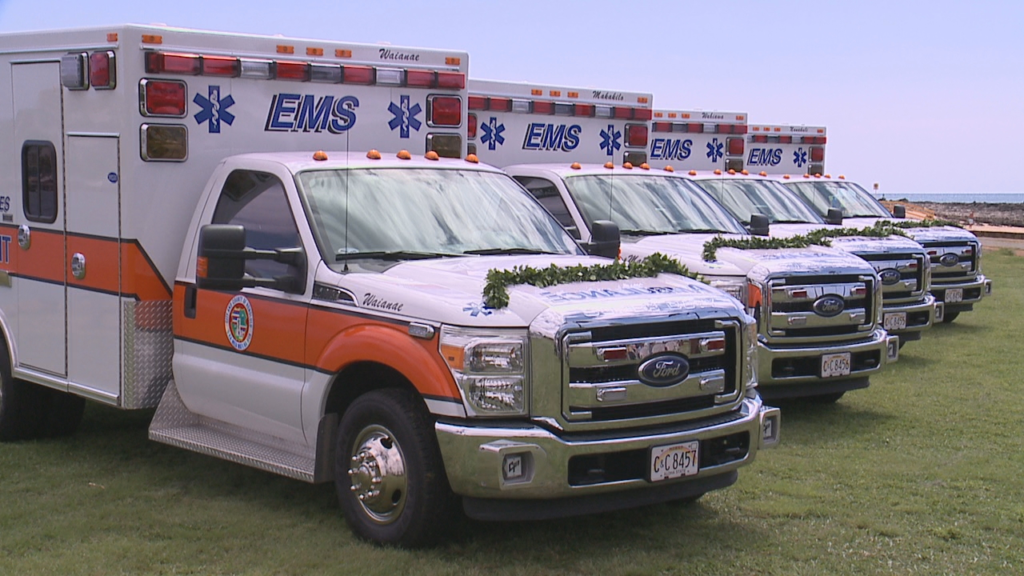Solving The EMS Staffing Crisis: How Texas Is Revolutionizing Emergency Medical Services

What You Will Read On This Page
- 1 Understanding The Importance Of A Well-Staffed EMS System
- 2 The Current State Of EMS Staffing In Texas
- 3 The Impact Of The EMS Staffing Crisis On Patient Care
- 4 Texas’ Innovative Solutions To Address The EMS Staffing Crisis
- 5 Implementing Recruitment And Retention Strategies For EMS Personnel
- 6 Collaborative Efforts Between Government Agencies And Healthcare Organizations
- 7 StaffDash: A Houston-Based EMS Staffing Agency Leading The Charge
- 8 Success Stories And Case Studies From Texas’ EMS System
- 9 The Future Of EMS Staffing In Texas And Beyond
- 10 The Takeaway
In the fast-paced world of emergency medical services (EMS), every second counts. However, the shortage of trained professionals in the field has created a crisis that threatens the well-being of communities across the nation. Fortunately, Texas is leading the charge in revolutionizing EMS staffing and tackling this pressing issue head-on.
With innovative strategies and a commitment to excellence, the Lone Star State is paving the way for a brighter future in emergency medical services. From implementing comprehensive recruitment and training programs to offering attractive incentives, Texas is attracting a new generation of passionate individuals who are dedicated to saving lives. In this article, we will explore how Texas is solving the EMS staffing crisis and the impact it is having on the quality of emergency medical care. Join us as we delve into the exciting developments taking place in the heart of the Lone Star State.
Understanding The Importance Of A Well-Staffed EMS System
A well-staffed EMS system is crucial for ensuring the prompt and effective delivery of emergency medical care. When emergencies strike, every second counts, and having the right number of trained professionals available can mean the difference between life and death. Unfortunately, many regions across the United States are facing a shortage of EMS personnel, resulting in delayed response times and suboptimal patient outcomes.
The Current State Of EMS Staffing In Texas
Texas, like many other states, has been grappling with the EMS staffing crisis. The shortage of qualified professionals has put immense strain on the existing workforce, leading to burnout and increased stress levels. According to recent statistics published by Texas EMS Alliance, Texas currently faces a shortage of approximately 1,000 EMS personnel, with rural areas being particularly underserved. This shortage has not only impacted emergency medical care in these communities but has also placed an additional burden on neighboring regions.

The Impact Of The EMS Staffing Crisis On Patient Care
The shortage of EMS personnel in Texas has had a direct impact on the quality of patient care. Delayed response times due to understaffing can result in critical patients not receiving timely medical attention, leading to increased morbidity and mortality rates. Additionally, overworked EMS professionals may experience fatigue and reduced performance, further compromising the quality of care provided. The ripple effect of the staffing crisis extends beyond the immediate emergency care setting, as crowded emergency departments and overwhelmed hospitals struggle to accommodate patients who require more specialized care.
Texas’ Innovative Solutions To Address The EMS Staffing Crisis
Recognizing the urgency of the situation, Texas has taken proactive measures to address the EMS staffing crisis and ensure the availability of well-trained professionals when emergencies arise. The state has implemented a range of innovative solutions aimed at attracting and retaining EMS personnel, as well as improving the overall quality of emergency medical care.
Implementing Recruitment And Retention Strategies For EMS Personnel
One of the key strategies employed by Texas is the implementation of comprehensive recruitment and retention programs for EMS personnel. The state has established partnerships with educational institutions to promote EMS careers and provide accessible training programs. By offering scholarships, tuition reimbursements, and loan forgiveness programs, Texas is making it more financially feasible for individuals to pursue a career in emergency medical services. Additionally, the state has prioritized the development of clear career pathways and opportunities for advancement within the EMS field, creating a sense of professional growth and job security.
Collaborative Efforts Between Government Agencies And Healthcare Organizations
Texas has also fostered collaborative efforts between government agencies and healthcare organizations to address the EMS staffing crisis. By working together, these entities have been able to pool resources and expertise to develop effective recruitment and training initiatives. Government agencies provide funding and support, while healthcare organizations offer clinical training opportunities and mentorship programs for aspiring EMS professionals. This collaboration not only benefits the individuals entering the field but also strengthens the overall EMS system in Texas.
StaffDash: A Houston-Based EMS Staffing Agency Leading The Charge

One notable example of Texas’ innovative approach to solving the EMS staffing crisis is StaffDash, a Houston-based EMS staffing agency. Founded by a group of experienced EMS professionals, StaffDash aims to bridge the gap between supply and demand for EMS personnel in the region. The agency utilizes advanced technology and data-driven staffing algorithms to efficiently match qualified professionals with available shifts. By offering flexible work schedules and competitive compensation, StaffDash has successfully attracted a diverse pool of EMS personnel, ensuring that Houston and the surrounding areas have adequate coverage at all times.
Success Stories And Case Studies From Texas’ EMS System
The efforts of Texas to revolutionize EMS staffing have yielded promising results and success stories across the state. In rural areas that were once severely underserved, the implementation of recruitment and training programs has led to an increase in the number of qualified EMS professionals. Response times have improved, and patient outcomes have shown marked enhancements. These success stories not only demonstrate the effectiveness of Texas’ innovative strategies but also serve as inspiration for other regions facing similar challenges.
The Future Of EMS Staffing In Texas And Beyond
As Texas continues to make significant strides in solving the EMS staffing crisis, the future of emergency medical services in the state looks promising. With ongoing investments in recruitment, training, and retention programs, Texas is creating a sustainable pipeline of qualified EMS professionals who are dedicated to providing high-quality emergency medical care. The state’s innovative approach serves as a blueprint for other regions grappling with the EMS staffing crisis, offering valuable insights and strategies that can be adapted and implemented elsewhere.
The Takeaway
The EMS staffing crisis is a pressing issue that demands immediate attention and innovative solutions. Texas has taken the lead in revolutionizing emergency medical services by implementing comprehensive recruitment and training programs, fostering collaborative efforts, and supporting innovative staffing agencies like StaffDash. Through these strategic initiatives, Texas is attracting a new generation of passionate individuals who are dedicated to saving lives and ensuring the well-being of their communities. As other states and regions face similar challenges, they can look to Texas as a shining example of how to address the EMS staffing crisis and create a brighter future for emergency medical services. With continued commitment and investment, the Lone Star State is paving the way for a more efficient and effective EMS system that will benefit all. The time to act is now, and Texas is showing us the way forward.



